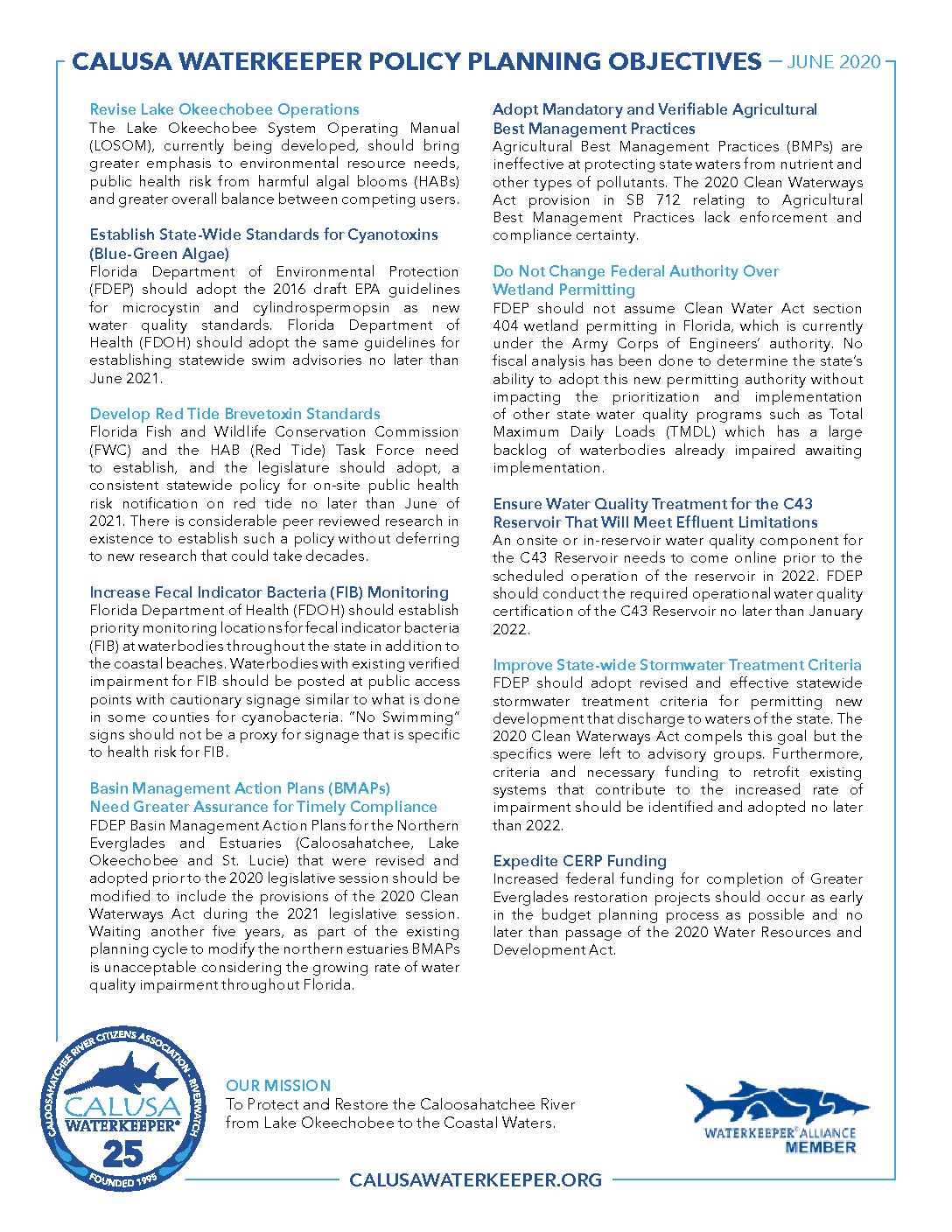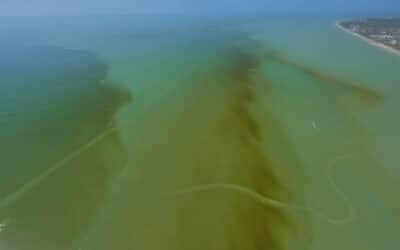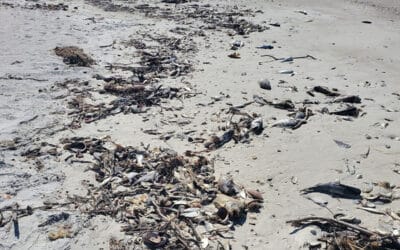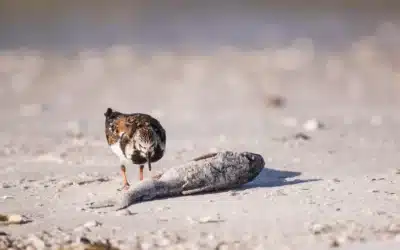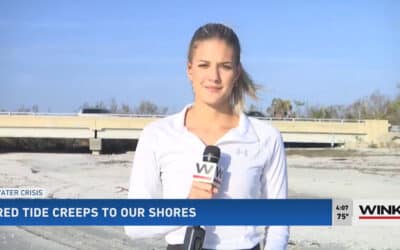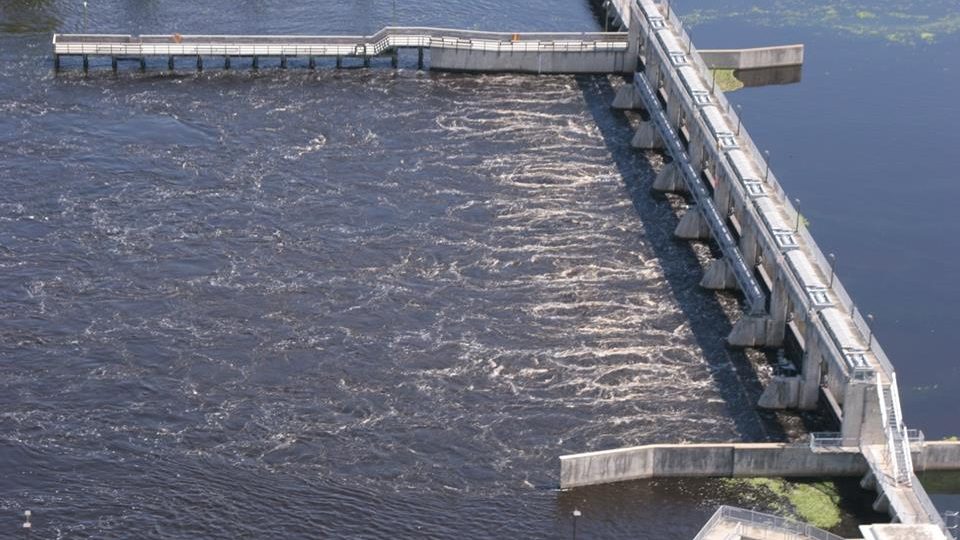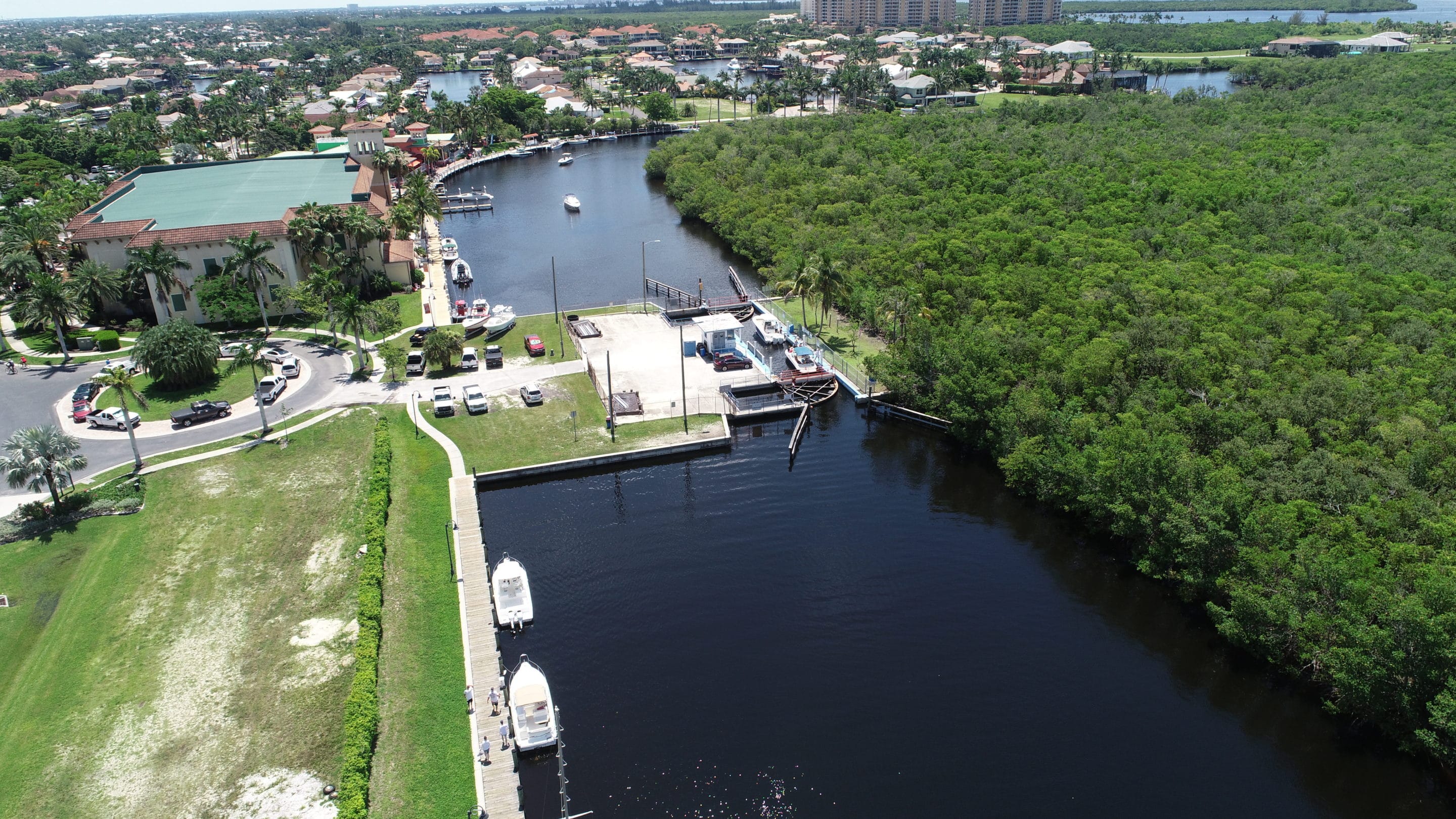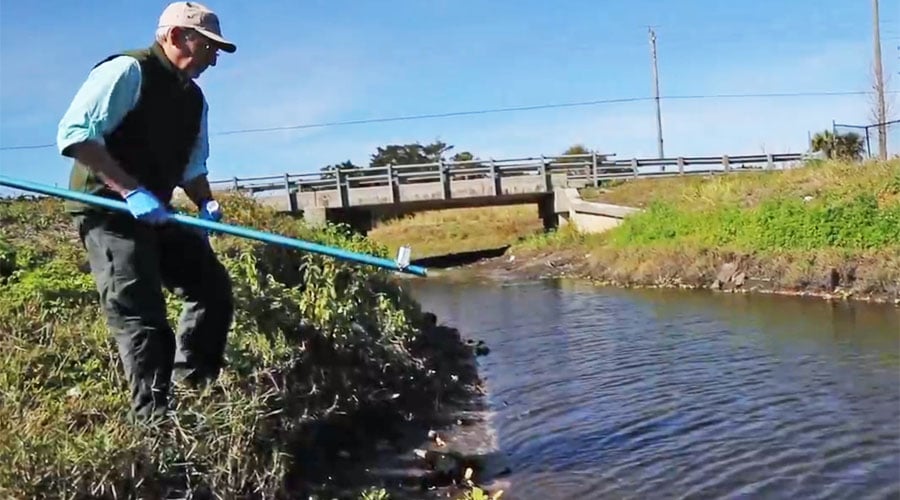Issue:
Harmful Algal Blooms
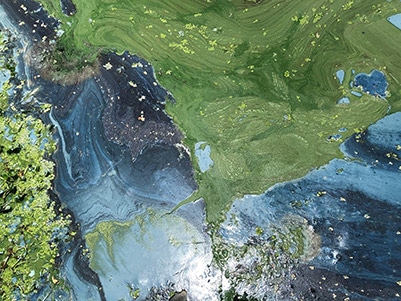
Blue-green Algae (Cyanobacteria)
Cyanobacteria is one of the oldest types of lifeforms on Earth and is found primarily in freshwater systems. There are thousands of species of cyanobacteria and many are known to produce a variety of toxins.
Cyanobacteria is a photosynthetic microorganism that processes sunlight, nitrogen and phosphorous to live. They can regualate their position in the water column for optimal light and thrive in warm, nutrient-rich fresh or brackish water with low turbulence.
Microcystis and Anabaena are two of the most common cyanobacteria found in estuarine systems today. These bacteria are known to produce cyanotoxins dangerous to humans and animals. Microcystin and Anatoxin are classes of hepatoxin and neurotoxin, affecting the liver and brain, respectively.
Human and animal exposure to Cyantoxins comes in three primary forms of contact:
- Dermal contact
- Inhalation or aspiration from aerosolized surface water
- Ingestion
Harmful algal blooms have severe impacts on human health, aquatic ecosystems and our economy.
Red Tide (Karenia brevis)
Red tide is a marine dinoflagellate found in saltwater, and has been known to inhabit the Gulf of Mexico throughout recorded history. Red tide blooms have been increasing in scope and intensity within the last 30 years. Red tide has also occurred throughout the Gulf and Atlantic Coast, reaching as far as North Carolina.
Karenia brevis can utilize at least 12 different forms of nutrients and also consume other single cell organisms for food. They are capable of motion and directed swimming allowing them greater access to nutrients.
Red Tide produces brevatoxins which can be deadly to many sea animals and often causes acute respiratory symptoms in humans. Aerosolized health effects include irritation of the eyes, nose, throat and lungs and exacerbating occurrences of respiratory distress, bronchitis, asthma and pneumonia. Brevatoxin can also have a serious impact on the marine food-chain, contributing to shellfish poisoning and gastrointestinal disorders.

Take Action
Contact Your State Legislators
Calusa Waterkeeper calls on citizens and stakeholders to urge elected officials and responsible agencies to take the following ten actions:
The toxic blue-green algae (cyanobacteria) often stretching from Lake Okeechobee to our west coast is the result of decades of failed water policy implementation. A perfect storm of lax enforcement and under-funding at the local, state and national levels has culminated in the historic harmful algae blooms (HABs) that plagued our region in 2018 (and so many other years).
If political leaders fail to take action, history is doomed to repeat itself year after year, causing catastrophic harm to our ecosystem and our economy.
The science is clear on what needs to be done.
What has been lacking is the political will to enact the regulation and legislation required to begin to reverse these problems. We look to you, as informed citizens, to proactively communicate your water quality concerns to newly elected officials. It will take a groundswell of voices if we are to affect change in Tallahassee during this coming legislative session.
Find Your Legislators
Related News Stories
Harmful Algal Blooms
Red Tide Causes Respiratory Irritation and Hundreds of Thousands of Dead Fish on our Coast – What Can We Do?
For the last several weeks, red tide has brought intense respiratory irritation to beachgoers, hundreds of thousands of dead fish, and several dead sea turtles and dolphin to our beaches.
Florida Visitors Discovering Unpleasant Surprise at Beaches – Red Tide
Spring breakers are flocking to Florida in hopes of enjoying clear water and white sand beaches, but many are instead discovering red tide. Vacationers have posted photos on social media of dead fish washing up on the shores.
Red Tide Bloom Gaining Strength in Some Areas
A red tide bloom along the Southwest Florida coast appears to be spreading in size, with recent reports from the Florida Fish and Wildlife Conservation Commission showing counts of 1 million cells per liter and higher in Lee County, with the bloom stretching from Tampa Bay to Florida Bay.
Researchers Measure Water Conditions that Lead to Red Tide in SWFL
Researchers from Florida Gulf Coast University and the Sanibel-Captiva Conservation Foundation take water samples from depths of 45 feet in the Gulf of Mexico to right off the shore of Sanibel and several spots in between to better understand our water quality issues.
Red Tide Continues to Make its way through Southwest Florida Waterways
Red tide continues to make its way across southwest Florida waterways. Some areas are not feeling the full effect, though many beaches are seeing some traces of the bloom. “It’s pretty dynamic where it’s at,” said John Cassani with Calusa Waterkeeper.
Red Tide Blooms Appearing Along the Southwest Florida Coast
Red tide is appearing up and down the Southwest Florida coastline, so Lee and Collier counties have both issued health alerts for the blooms. They say to stay away from the water, especially if you have breathing issues, and don’t try to remove the dead fish yourself.
Make a Donation
Get Notified
Priority Issues
Harmful Algal Blooms
Cyanobacteria & Red Tide
Cyanobacteria (blue-green algae) and Karenia brevis (red tide) have been making major impacts on Southwest Florida.
Lake Okeechobee Discharges
Revise System Operating Manual
The Caloosahatchee River often suffers from too much freshwater in the wet season, and not enough freshwater in the dry season.
Cape Coral Spreader Canals
Nutrient & Sediment Loading
The City of Cape Coral is working to remove large storm-water barriers to make recreational boating more convenient.
Bacteria Monitoring
Fecal Indicator Bacteria
Calusa Waterkeeper has been at the forefront of monitoring this Fort Myers tributary for fecal bacteria indicators.
























